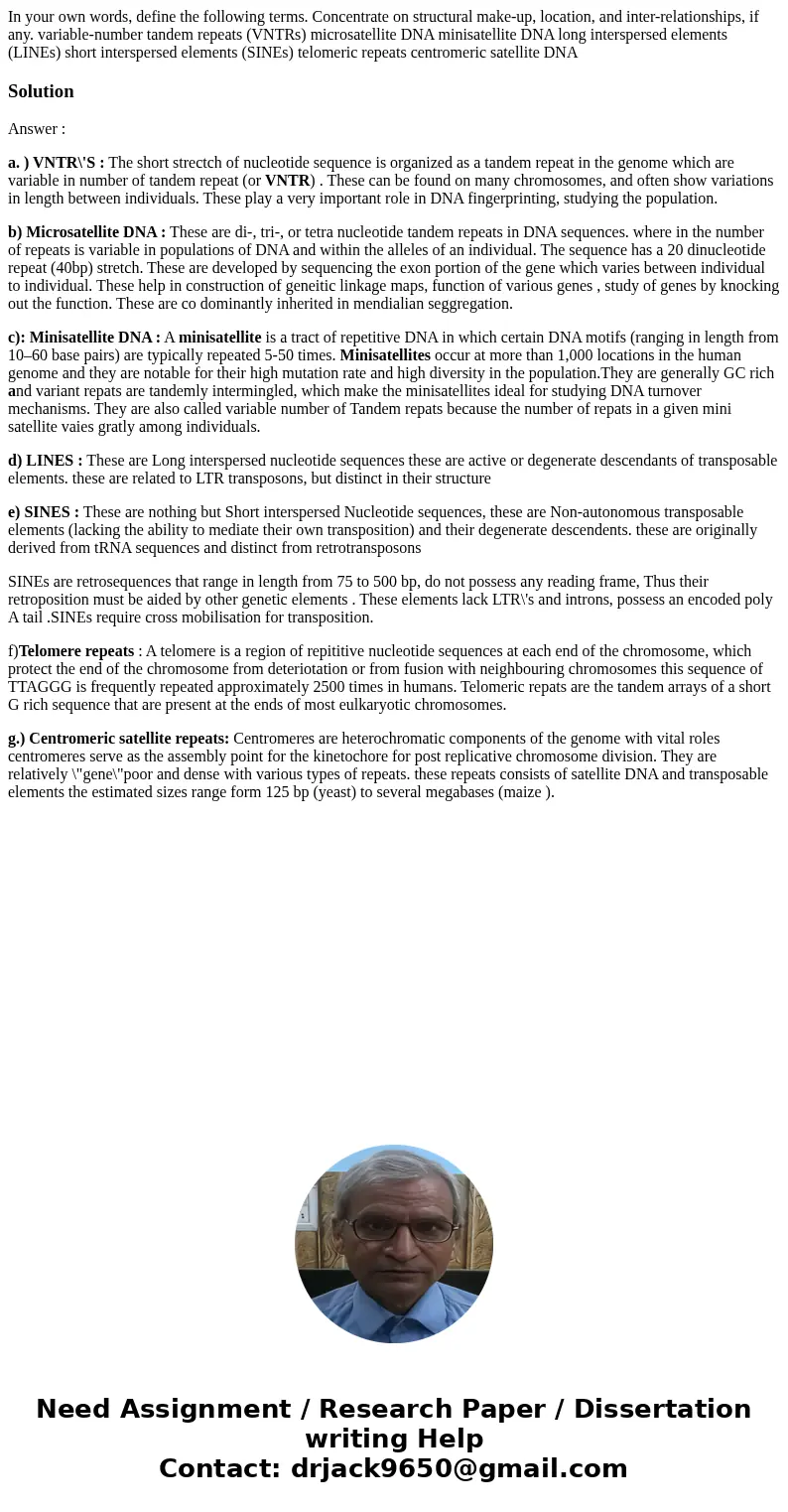In your own words define the following terms Concentrate on
Solution
Answer :
a. ) VNTR\'S : The short strectch of nucleotide sequence is organized as a tandem repeat in the genome which are variable in number of tandem repeat (or VNTR) . These can be found on many chromosomes, and often show variations in length between individuals. These play a very important role in DNA fingerprinting, studying the population.
b) Microsatellite DNA : These are di-, tri-, or tetra nucleotide tandem repeats in DNA sequences. where in the number of repeats is variable in populations of DNA and within the alleles of an individual. The sequence has a 20 dinucleotide repeat (40bp) stretch. These are developed by sequencing the exon portion of the gene which varies between individual to individual. These help in construction of geneitic linkage maps, function of various genes , study of genes by knocking out the function. These are co dominantly inherited in mendialian seggregation.
c): Minisatellite DNA : A minisatellite is a tract of repetitive DNA in which certain DNA motifs (ranging in length from 10–60 base pairs) are typically repeated 5-50 times. Minisatellites occur at more than 1,000 locations in the human genome and they are notable for their high mutation rate and high diversity in the population.They are generally GC rich and variant repats are tandemly intermingled, which make the minisatellites ideal for studying DNA turnover mechanisms. They are also called variable number of Tandem repats because the number of repats in a given mini satellite vaies gratly among individuals.
d) LINES : These are Long interspersed nucleotide sequences these are active or degenerate descendants of transposable elements. these are related to LTR transposons, but distinct in their structure
e) SINES : These are nothing but Short interspersed Nucleotide sequences, these are Non-autonomous transposable elements (lacking the ability to mediate their own transposition) and their degenerate descendents. these are originally derived from tRNA sequences and distinct from retrotransposons
SINEs are retrosequences that range in length from 75 to 500 bp, do not possess any reading frame, Thus their retroposition must be aided by other genetic elements . These elements lack LTR\'s and introns, possess an encoded poly A tail .SINEs require cross mobilisation for transposition.
f)Telomere repeats : A telomere is a region of repititive nucleotide sequences at each end of the chromosome, which protect the end of the chromosome from deteriotation or from fusion with neighbouring chromosomes this sequence of TTAGGG is frequently repeated approximately 2500 times in humans. Telomeric repats are the tandem arrays of a short G rich sequence that are present at the ends of most eulkaryotic chromosomes.
g.) Centromeric satellite repeats: Centromeres are heterochromatic components of the genome with vital roles centromeres serve as the assembly point for the kinetochore for post replicative chromosome division. They are relatively \"gene\"poor and dense with various types of repeats. these repeats consists of satellite DNA and transposable elements the estimated sizes range form 125 bp (yeast) to several megabases (maize ).

 Homework Sourse
Homework Sourse